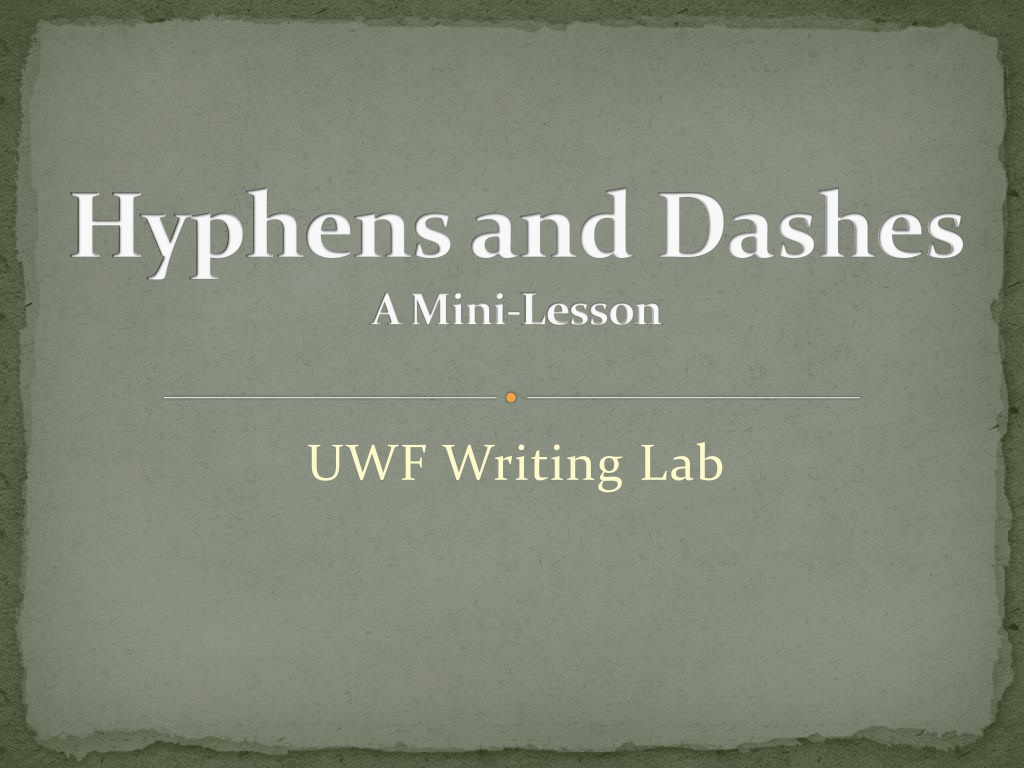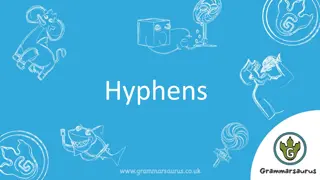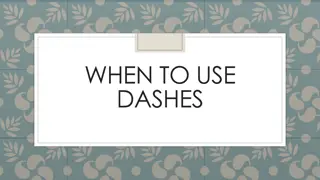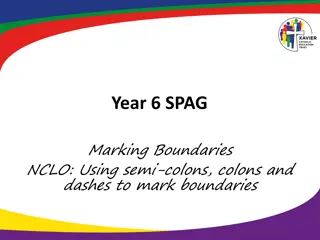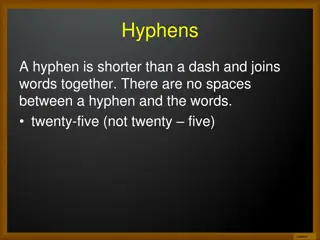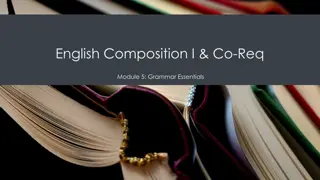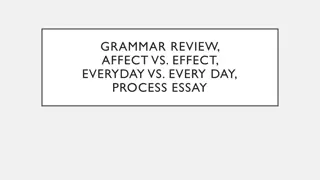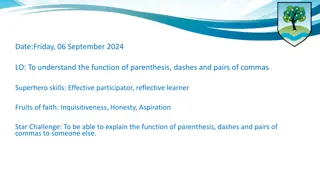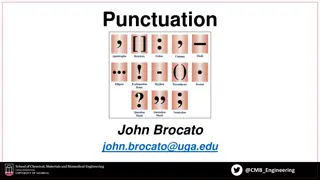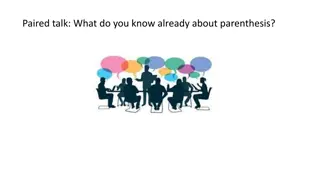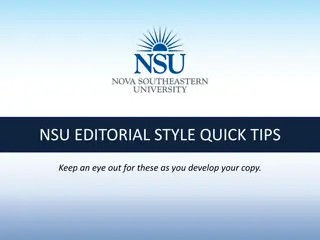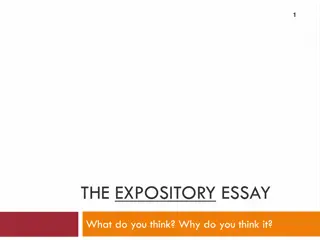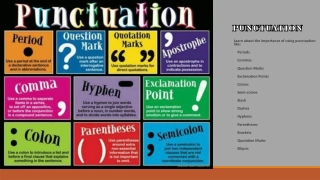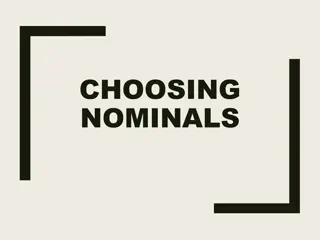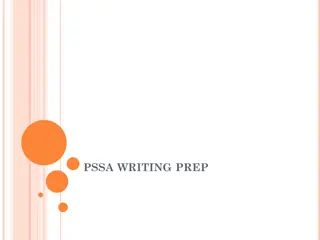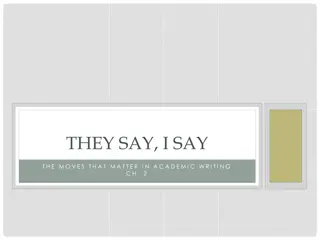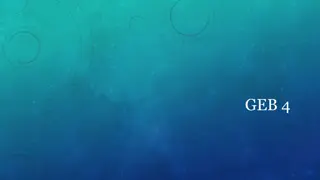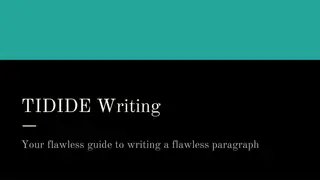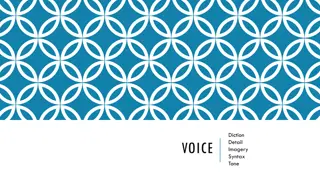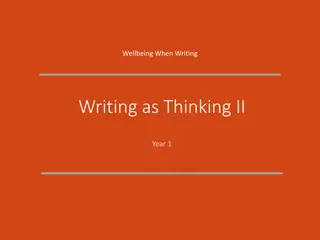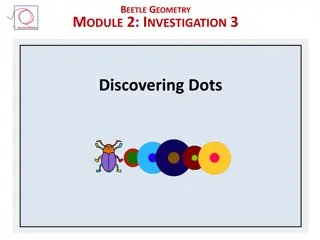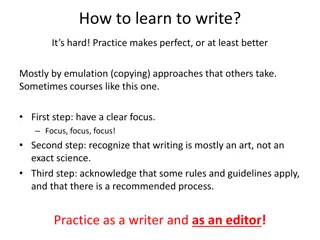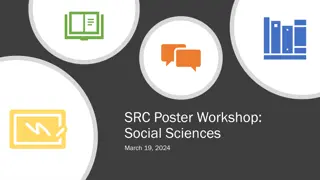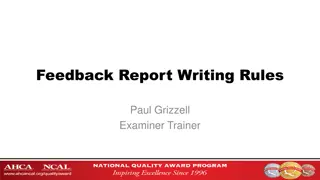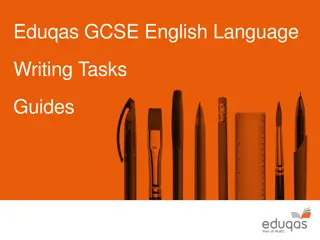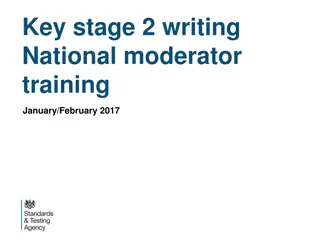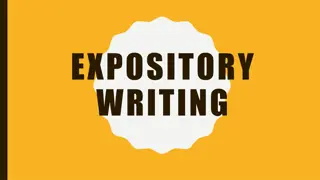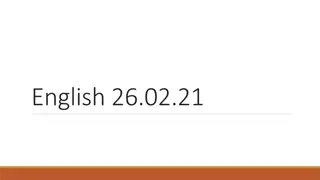Mastering Hyphens and Dashes in Writing
Understand the distinctions between hyphens and dashes and learn how to use them correctly to enhance your writing. Discover the nuances of hyphens in compound adjectives, the importance of using dashes for emphasis, and ways to avoid confusion by using the appropriate punctuation marks. Improve your writing style with this comprehensive guide from UWF Writing Lab.
Download Presentation

Please find below an Image/Link to download the presentation.
The content on the website is provided AS IS for your information and personal use only. It may not be sold, licensed, or shared on other websites without obtaining consent from the author. Download presentation by click this link. If you encounter any issues during the download, it is possible that the publisher has removed the file from their server.
E N D
Presentation Transcript
Hyphens and Dashes A Mini-Lesson UWF Writing Lab
The Differences The hyphen (-) is used to separate parts of a word. The dash ( ) is used to separate parts of a sentence. (Note: The dash can be represented by two hyphens.)
Dashes should be used in all of the following sentences. Notice the potential for confusion when the hyphen is used instead of the dash. I have told you everything I know-nothing has been omitted from my account. Whatever may be your pleasure-seek no further, friends-you have come to the right place! Boy, I love being single-parents, I feel for you-because I don t think I ll ever get married and have kids. Please find a place to sit-down on the left there-and we can get started.
Confused yet? Using a dash instead of a hyphen will correct all of these sentences: I have told you everything I know nothing has been omitted from my account. Whatever may be your pleasure seek no further, friends you have come to the right place! Boy, I love being single parents, I feel for you because I don t think I ll ever get married and have kids. Please find a place to sit down on the left there and we can get started.
Use a Hyphen To separate the parts of a compound adjective or noun a well-written document a thought-provoking story out-of-state students out-of-shape people a five-year-old boy (BUT: The boy is five years old.) secretary-treasurer student-teacher ratio work-study program inner-city schools jack-in-the-box mother-in-law
Use a Hyphen To set off certain prefixes well-being well-preserved self-conscious self-employed all-purpose ex-minister ex-husband anti-intellectual pro-American
Use a Dash (carefully and sparingly) To add emphasis Studies published and unpublished are included in the portfolio. I promise I will make it to your birthday party as long as you save me some cake!
Use a Dash To digress from the main clause All of my classes this semester chemistry, English, calculus, psychology, and physics are really pushing me to my limit. The last contestant two hours late finally made it to the competition. (This sentence is an example of digression and emphasis.)
So how do I make sure to use the right one? The dash can be represented by two hyphens (--). Microsoft Word will automatically turn two adjacent hyphens into a dash. Microsoft Word will also turn one hyphen into a dash if you enter the following keystrokes: SPACE, hyphen, SPACE. This dash ( ) is a little shorter than the long dash, but it is still longer than the hyphen.
REVIEW NOTE THE USE OF THE HYPHEN AND THE DASH IN THE SNTENCE BELOW: "To white evangelical women, Sarah Palin is a modern-day prophet, preaching God, flag, and family--while remaking the religious right in her own image" (Lisa Miller, June 21, 2010 Newsweek).
